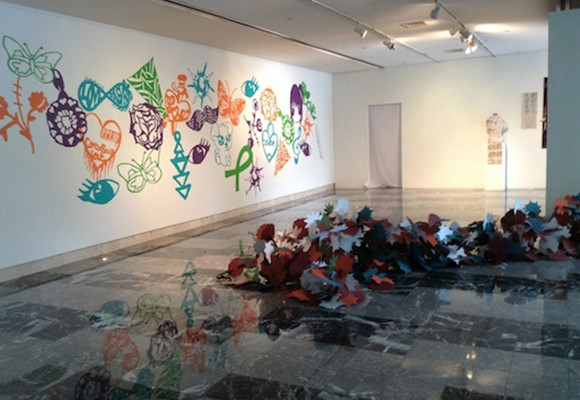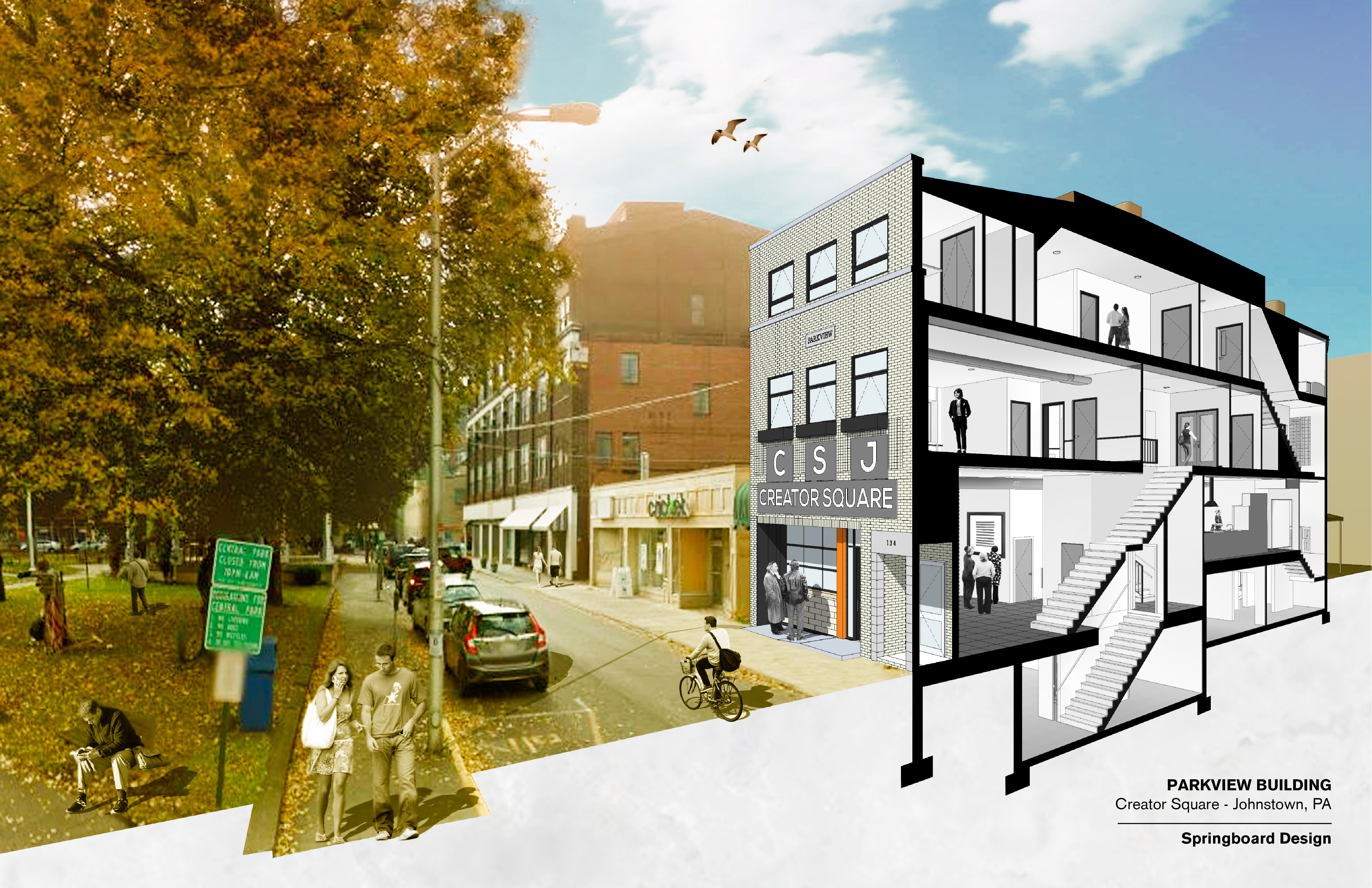There is a youthful touch on display in the latest show at the Esther Kline Gallery. Images of moustaches and puppies exist alongside cosmic patterns rendered in bold, primary colors, brightening up this space on The University City Science Center's campus.
But take a closer look: The jewelry is cut with a high-precision lasercutter, the scarves are handprinted using laser-etched stamp pads and the posters are scaled-up images printed on vinyl with the help of advanced imaging software. This is not your typical middle school art show.
The 15 participating artists are members of Operation Eve, an in-school initiative that engages young women in Science Math Engineering and Technology (STEM) curricula through art and design projects, often with the help of high-tech digital fabrication tools. Since launching this past January, Operation Eve has worked with students from Grover Washington Middle School, a public school in the Olney section of North Philadelphia.
The program was created by Breadboard, the arts-outreach arm of the Science Center, through a partnership with NextFab Studios and the Philadelphia Arts and Education Partnership. Like the Sustainability Workshop and the Science Leadership Academy, Operation Eve offers opportunities for tactile learning, but, unlike those programs, it focuses exclusively on Philadelphia's female students, among the most disenfranchised when it comes to STEM education.
Exacerbating the myriad academic challenges associated with underfunded schools is the fact that these young women often aren't expected by peers or family members to achieve in STEM subjects. According to the National Science Foundation, female fifth-graders demonstrate the same level of interest and ability as their male counterparts. By ninth grade, however, they fall behind.
To reverse this trend, Operation Eve exposes participants to the broad, creative world of modern-day STEM while they are in those critical middle school years. This year, students learned how to collect visual information from the internet and create original graphics, then scale those graphics to produce goods including jewelry, stamps and vinyl posters. They worked with fabrication machines at NextFab and went on field trips to local innovation hubs, including Drexel's ExCITe Center, where they watched industrial knitting machines weave digital sensors into wearable fabrics.
"We're not just exposing young women to the heady book stuff of STEM," says Lisa Volta, Operation Eve's instructor. "We're exposing them to all different kinds of technology."
Dan Schimmel, former director of Breadboard, was aware of the realities facing young female students when he dreamed up Operation Eve. In January 2010, shortly after Breadboard launched, Schimmel's first daughter — you guessed it: Eve — was born. Around this time, John Maeda, president of the Rhode Island School of Design, began advocating for STEAM, the integration of the arts into STEM curricula. Maeda's ideas helped Schimmel solidify his concept.
"I was thinking about the future for my daughter," recalls Schimmel. "The program would be just for girls."
The program builds on Breadboard's mission of "lowering the barrier of access to emerging technology" through engagement with the arts. The organization initially offered public school students the opportunity to observe high-tech projects at NextFab and participate in one and two-day workshops. More recently, they've collaborated with NextFab, the Public Workshop and Tiny WPA on the Department of Making + Doing, which provides a permanent space for public arts-tech projects.
"We really tackle it through education," says David Clayton, program manager at Breadboard. "If we're teaching kids about 3-D modeling, then we have to start with 3-D modeling. You're right on the digital divide because a lot of these tools are web-based."
As evidenced by the diverse slate of makers at NextFab, digital fabrication technologies — including 3-D printing, industrial knitting machines, lasercutters and imaging software — are taking production out of factories and into the hands of individual innovators. Those who can use digital tools in creative and inventive ways have the potential to be players in the changing economy.
Operation Eve is also an exercise in product design and production cycles. In order to create multiple products from a single graphic, students had to learn concepts like scale and software optimization. Their final group project explored exponent formulas with a sculpture made of original radial shapes.
"It's not just about product design," says Clayton. "It's also about e-commerce and entrepreneurship. There can be a lot of facets just from one art and design project."
Next year, Operation Eve plans to open an Etsy shop to sell their tech-inspired wares. The students have already met women who are making a living from combining fine arts with STEM. The program's visiting artists have included Amber Zaraza of Phea Jean, who designs handbags, hair pieces and infinity scarves, and Krista Peel of KP Jewelry, a painter turned jeweler with a passion for natural stones and geology.
Next year, Operation Eve plans to work more closely with teachers to incorporate classroom lessons. During a survey Volta conducted just before the art show, students reported that participating in Operation Eve had helped them learn how to work in a team and ask for help.
"They're learning these things in school," says Volta. "But these things can be taken over to their real lives. They can create and make and have a career out of this stuff that we're learning."
The University City Science Center has partnered with sister publication Flying Kite and Keystone Edge to showcase innovation in Greater Philadelphia through the "Inventing the Future" series.
DANA HENRY is Flying Kite's Innovation & Job News editor. Send feedback here.







